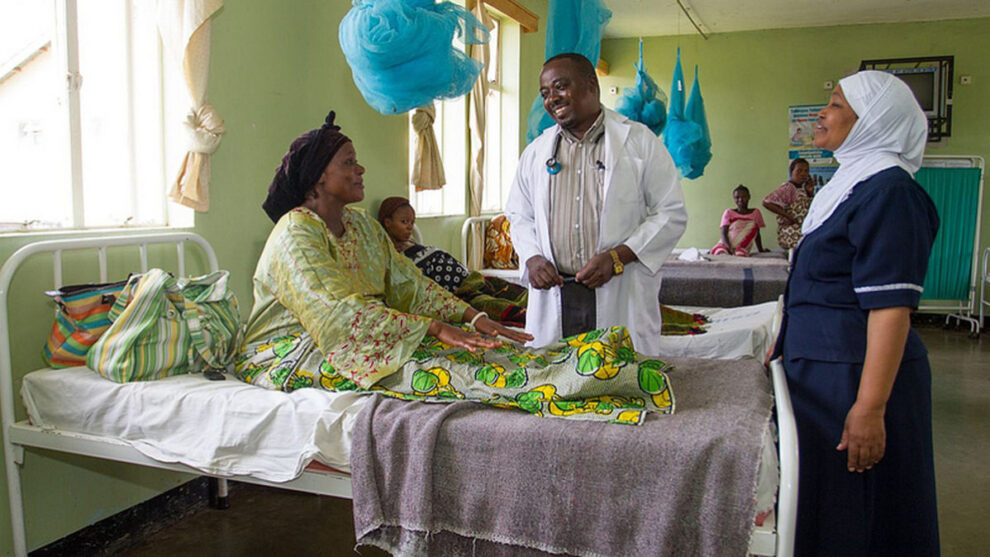“All people, everywhere, irrespective of location or socioeconomic status, deserve the right care, right in their community.” Unfortunately, this is hardly the reality for many African citizens. Despite the remarkable progress made over the last two decades towards improving healthcare in Africa, significant healthcare inequities remain across the continent. The continent’s quality of health services is generally poor, with less than half of Africa’s citizens (48%) having access to the healthcare they need.
Each year, approximately 97 million Africans incur “catastrophic healthcare costs.” Annually, 15 million people will be pushed into poverty as a result of these out-of-pocket costs, according to a report by the Africa Health Agenda International Conference (AHAIC). Despite these poor health indices, the continent is saddled with 25% of the global burden of disease and a continuously rising burden of non-communicable diseases (NCDs).
For Africa to progress towards achieving universal health coverage and the United Nations’ Sustainable Development Goals (SDGs), concerted efforts by African governments in collaboration with relevant stakeholders are imperative to address the barriers to healthcare equity on the continent.
Healthcare equity: challenges in Africa
The aim of healthcare equity is to ensure that everyone can access affordable, culturally competent healthcare regardless of their race or ethnicity, age, disability, gender, nationality, socioeconomic status, or geographical background. Numerous factors influence the attainment of healthcare equity. These include the characteristics of the health system and issues in wider society.
In Africa, a major factor contributing to healthcare inequity is poor funding for healthcare. Most African countries barely spend up to 5% of their GDP on healthcare, which is less than the global average. Hence, the majority of Africans, mostly the poor and those in the middle-income bracket, rely on underfunded public health facilities, while only a small minority have access to well-funded, quality private health care. Another challenge is the significant inequity in access to health insurance, with formal workers and the rich having more access than informal workers, the poor, and vulnerable groups.
In Africa, a major factor contributing to healthcare inequity is poor funding for healthcare. Most African countries barely spend up to 5% of their GDP on healthcare
Africa’s poor pharmaceutical manufacturing capacity is also a significant challenge. With only approximately 375 drug makers serving over 1.1 billion people, Africa is left dependent on imports from international markets for up to 70% of its pharmaceutical products.
The consequence of this is long-standing, inequitable access to quality, safe, efficacious, and affordable medical products. Other challenges are fragmented governance and poor healthcare management, poor and dilapidated health facilities, and a shortage of human resources, among others.
Strategies to improve healthcare equity in Africa
Addressing the challenge of healthcare inequity in Africa requires a multifaceted and multisectoral approach. Bloom Public Health proposes the following strategies:
1. Improving access to primary healthcare: Achieving equitable access to healthcare requires investments in resilient health systems, especially in strong primary healthcare with an emphasis on promoting health and preventing disease. There is a need for intensified direct investment to boost community health workers, medicines, equipment, facilities, and ambulances for primary healthcare across the continent. African governments should explore strategic public-private partnerships to increase funding for primary healthcare.
2. Expanding healthcare insurance: Closing the gap in access to health insurance is critical to achieving the goal of UHC, which is to ensure that everyone has access to high-quality healthcare services that they need without the risk of financial ruin or impoverishment. African countries need to adopt the National Health Insurance Scheme (NHIS) and ensure wider and more equitable health insurance coverage in their respective countries.
3. Strengthening local pharmaceutical manufacturing: An important part of the journey to healthcare equity is ensuring a reliable supply of safe, effective, and high-quality medicines across the continent. To that end, the Africa CDC has set an ambitious target to manufacture 60% of Africa’s routine vaccine needs by 2040.
In the last few years, various initiatives to support local pharmaceutical manufacturing on the continent have commenced, including the establishment of the African Medicine Agency (AMA) and the introduction of the African Pharmaceutical Technology Foundation (APTF). In Nigeria, Bloom Public Health has partnered with the National Institute for Pharmaceutical Research and Development (NIPRD) in a World Bank-funded IMPACT Program to support local pharmaceutical manufacturers in Nigeria towards achieving WHO prequalification.
Bloom Public Health is also implementing the Pharmacy Project to establish pharmaceutical manufacturing parks in various states across Nigeria, with the vision of creating a sustainable environment to make quality medicines available and affordable.
4. Improving public health policies: Achieving health equity requires reducing unnecessary and avoidable differences that are unfair and unjust. This can be achieved by integrating health equity into public health policies. Policies are effective tools for addressing health disparity issues as they reach broader populations and have a larger scope than individual-level interventions.
Public health policies are multidisciplinary in nature and consider the political, economic, social, cultural, and lifestyle determinants of health in order to effect lasting structural changes that will improve health outcomes for vulnerable people.
In conclusion
Healthcare equity aims to improve health outcomes and increase access to health services, especially for underserved populations. African governments can achieve this by concentrating on providing access to basic healthcare and affordable drugs, implementing equitable public health policies, and extending medical insurance coverage through creative partnerships with the private sector.
Source : Business Day
















